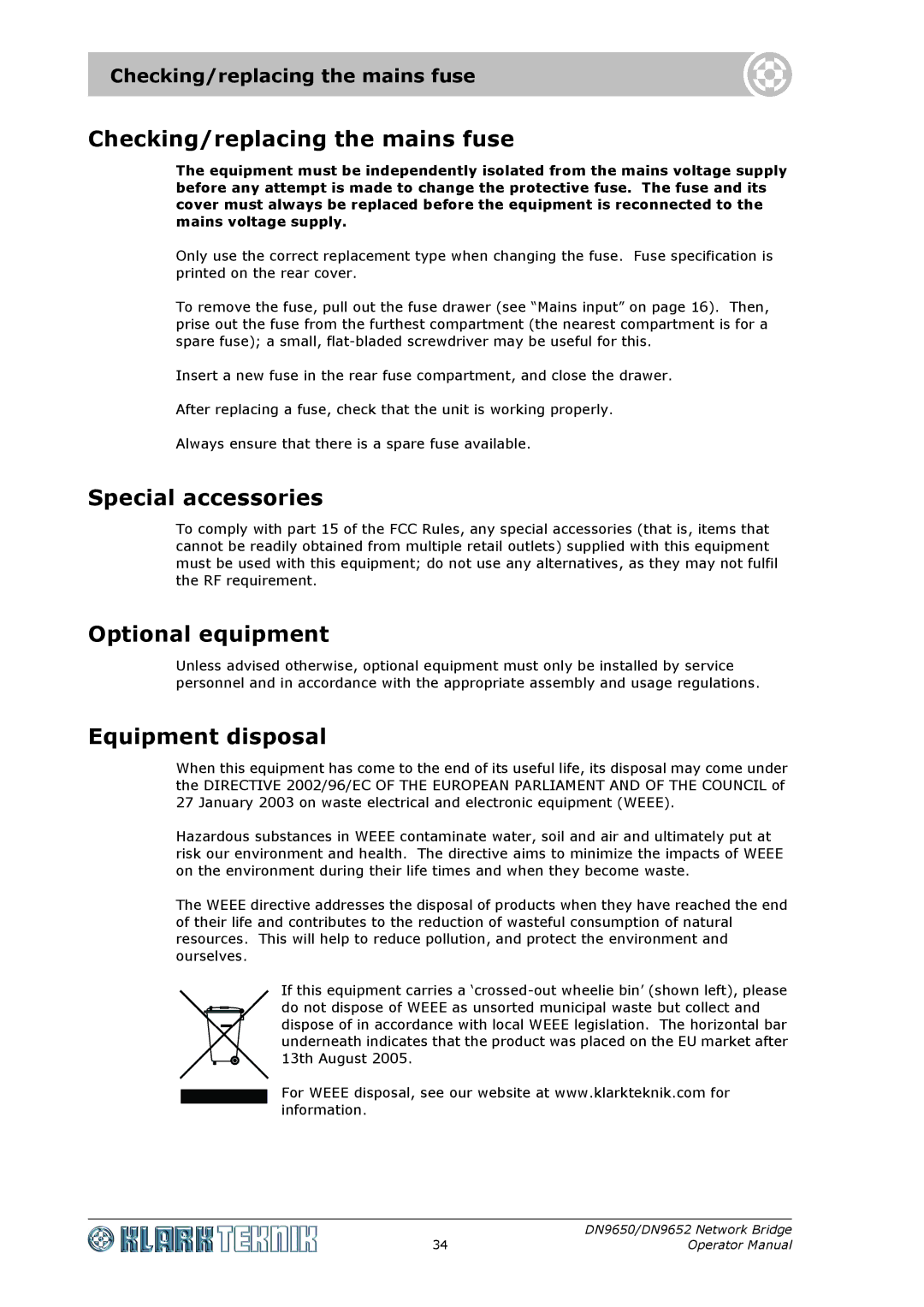
Checking/replacing the mains fuse
Checking/replacing the mains fuse
The equipment must be independently isolated from the mains voltage supply before any attempt is made to change the protective fuse. The fuse and its cover must always be replaced before the equipment is reconnected to the mains voltage supply.
Only use the correct replacement type when changing the fuse. Fuse specification is printed on the rear cover.
To remove the fuse, pull out the fuse drawer (see “Mains input” on page 16). Then, prise out the fuse from the furthest compartment (the nearest compartment is for a spare fuse); a small,
Insert a new fuse in the rear fuse compartment, and close the drawer.
After replacing a fuse, check that the unit is working properly.
Always ensure that there is a spare fuse available.
Special accessories
To comply with part 15 of the FCC Rules, any special accessories (that is, items that cannot be readily obtained from multiple retail outlets) supplied with this equipment must be used with this equipment; do not use any alternatives, as they may not fulfil the RF requirement.
Optional equipment
Unless advised otherwise, optional equipment must only be installed by service personnel and in accordance with the appropriate assembly and usage regulations.
Equipment disposal
When this equipment has come to the end of its useful life, its disposal may come under the DIRECTIVE 2002/96/EC OF THE EUROPEAN PARLIAMENT AND OF THE COUNCIL of 27 January 2003 on waste electrical and electronic equipment (WEEE).
Hazardous substances in WEEE contaminate water, soil and air and ultimately put at risk our environment and health. The directive aims to minimize the impacts of WEEE on the environment during their life times and when they become waste.
The WEEE directive addresses the disposal of products when they have reached the end of their life and contributes to the reduction of wasteful consumption of natural resources. This will help to reduce pollution, and protect the environment and ourselves.
If this equipment carries a
For WEEE disposal, see our website at www.klarkteknik.com for information.
| DN9650/DN9652 Network Bridge |
34 | Operator Manual |
